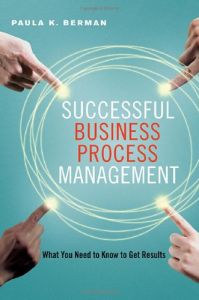Join getAbstract to access the summary!

Join getAbstract to access the summary!
Paula K. Berman
Successful Business Process Management
What You Need to Know to Get Results
AMACOM, 2014
What's inside?
Operating a business requires a standardized process management system that is tailored to fit your company.
Recommendation
Corporations cannot operate efficiently or coherently without standardized procedures and processes. The challenge is to create the right “business-process system” and then to pull together the training resources to teach your staff how to plan, organize, implement and monitor it. Paula K. Berman, a Six Sigma Black Belt, provides a comprehensive overview of business processes and procedures with helpful step-by-step instructions. Berman’s manual is authoritative and informative. Although she advises that business-process documentation should not make readers jump back and forth to comprehend the material, her book suffers some from that flaw. On the plus side, her appendix includes a useful business-procedures template. getAbstract recommends Berman’s advice to executives who must create, plan, manage, rollout, execute, monitor and revise their organization’s procedures, processes and systems.
Summary
About the Author
Paula K. Berman, a Six Sigma Black Belt, has worked with quality systems at companies of all sizes in a range of industries.

















Comment on this summary